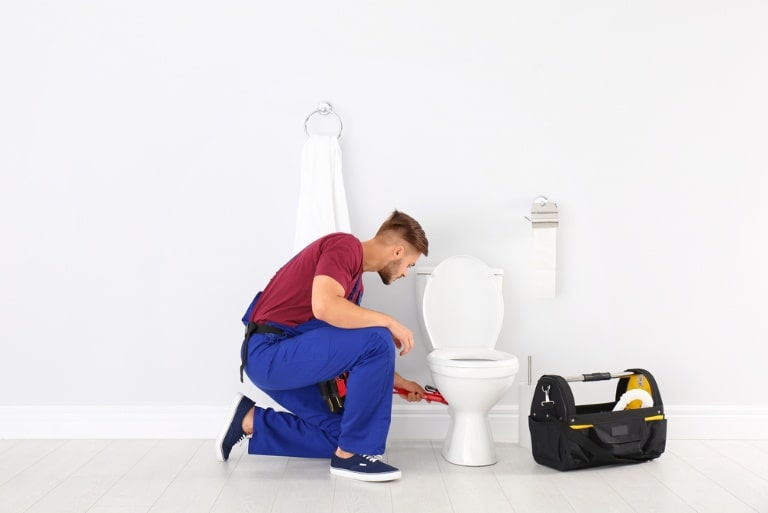Toilet Removal and Installation: What You Should Know

Let’s face it. Most people don’t think much about toilet removal and installation until the old one starts leaking or shifting. It sounds like a quick job, but it often turns into more than expected. Someone shuts off the water, thinks the bolts will loosen easily. But they don’t. One twists halfway, then stops. Another won’t move at all.
The area near the base doesn’t seem quite the same as the rest. Nothing dramatic, but something’s off. The air also carries a faint scent, something old that wasn’t noticeable before. A waxy ring underneath looks worn, uneven. Parts that haven’t been touched in years now need attention. What was supposed to be done before lunch is still going by dinner.
This kind of thing happens. Not always, but often enough. And it’s not just the parts; it’s the small surprises. The kind you can’t plan for but have to deal with anyway. Knowing what to expect helps, yes. But sometimes just knowing that things might not go smoothly is enough.
How Do You Know When It’s Time for a New Toilet Installation?
In some cases, it’s hard to miss what’s going on. There’s water around the base, or the flush just doesn’t work like it used to. But other times, things build up slowly. Maybe it runs all the time. Or you’ve been reaching for the plunger a bit more often lately. These little hints start adding up.
When repairs keep coming or you feel like the toilet is older than your water heater, it’s probably time to look into a new toilet installation. Upgrading doesn’t just mean a better-looking fixture. New models use less water and often flush more efficiently. That’s a win for your bills and the environment.
What Steps Are Involved in Removing an Old Toilet Properly?
Things seem manageable at the start. The plan is simple enough: stop the water, get the tank empty, move on. But this is usually the moment when small details begin to pile up. Sounds easy, right? Until you realize the bolts holding the base are rusted or the wax seal underneath smells… like it’s seen things.
Lifting out the toilet requires a bit of care. It’s heavier than it looks and there’s old sealant to clean up after. Sometimes, when the base comes off, there’s damage underneath. You might find a soft spot in the floor or a flange that’s seen better days. All of that has to be handled before a proper toilet installation can even begin.
What Does a Toilet Installation Plumber Actually Do?
If you’ve ever watched a professional at work, you know they make it look easy. Putting in a new toilet usually comes with small adjustments. The first try rarely works out exactly right. Sometimes the base shifts a bit, or the angle feels off. There’s a moment of stepping back, checking how it sits, maybe turning the water on just to see. The person doing the work pays attention to those little things. The job ends when everything stays in place and no water shows up where it shouldn’t.
Something feels off. Maybe the surface under the toilet isn’t flat. It’s hard to notice until weight is added. A pipe looks close enough, but somehow doesn’t connect the way it should. Things like that. They show up when no one expects them. If someone catches it early, the fix is easier. If not, it turns into a longer job.
What Are the Most Common Problems During Toilet Installation?
Here’s where it gets interesting. Not every toilet sits perfectly. The bolts might not line up. The wax ring could be the wrong thickness. Or maybe the previous toilet hid a water stain that’s now a bigger issue than you thought.
Another one? Uneven floors. A small tilt can cause leaks down the line. And leaks are expensive. What starts as a drip can ruin floors or create mold before you even notice. When something hidden shows up midway through the job, it can shift the whole picture. That’s often when the cost of toilet installation ends up higher than first expected.
What Are the Risks of Improper Toilet Removal and Installation?
It’s tempting to rush. Maybe skip a few steps. But that almost always leads to trouble. If the seal isn’t tight, water escapes. If the bolts are too loose, the toilet shifts. Too tight, and the porcelain cracks. Either way, you’ll probably be calling someone back sooner than you’d like.
Water damage doesn’t wait. And once it seeps into wood or drywall, it can get expensive fast. That’s one big reason why people turn to toilet installation services instead of trying to wing it. It’s just not worth the risk.
How Do Professional Toilet Installation Services Ensure Leak Prevention?
A skilled toilet installation plumber knows how to deal with misalignments, tricky fittings, and older plumbing systems that don’t always follow the book.
Let’s talk peace of mind. When you hire a team that specializes in this, they’ve seen it all. A quality toilet installation service starts by checking the basics: water pressure, pipe condition, floor level. Then they pick the right materials. That wax ring? Fitting everything together is only part of it. The real test comes when water’s running and pressure builds. That’s when it shows if the job’s really done right.
A quick flush, a few checks for leaks, maybe a small adjustment if needed. The goal isn’t just to make it work. It’s to make it last. And that’s what makes calling in the pros feel worth it in the end.




